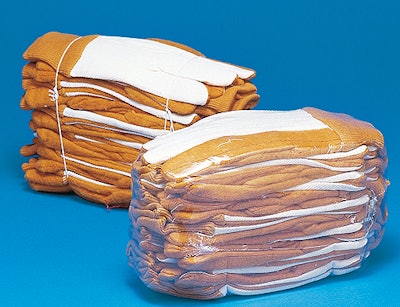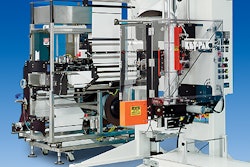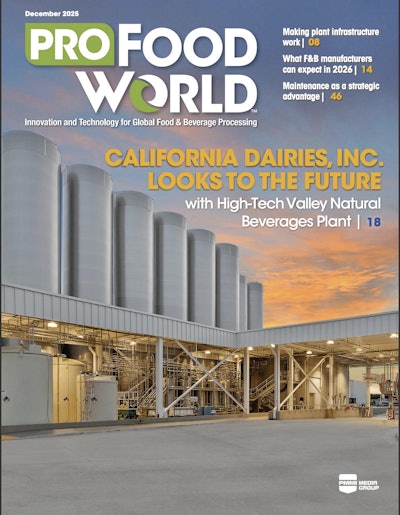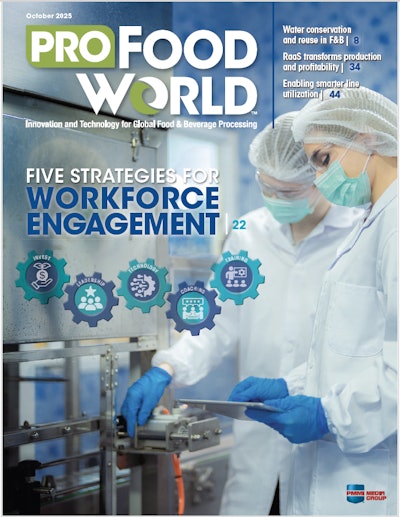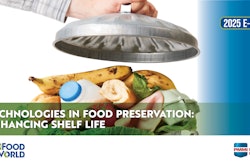Brookville Glove Co. has built its enviable reputation by making a wide variety of gloves that keep up with changing industrial, agricultural, and sports uses. Until earlier this year, however, Brookville’s packaging operation for its gloves wasn’t keeping up with the times.
So when Eric Luvaas became general manager at the Brookville, PA-based manufacturer, he called on Steve Rosel, a sales representative for Philpac, a packaging distributor in Buffalo, NY. Rosel and Luvaas had worked together on another assignment when Luvaas worked at a different company.
Eventually, Rosel called in Bob Lemke, Philpac’s packaging equipment specialist, and, after viewing the Brookville operation, the two offered Luvaas several different options for upgrading packaging.
Eventually, Philpac installed a new semi-automatic glove bundling and packing line using a variety of equipment the distributor represents: The line includes an L-bar film wrapper and shrink tunnel from Damark (Lewisville, TX), a case packing station and sealer from Belcor (Richmond, British Columbia, Canada), a print-and-apply labeler and a high-resolution ink-jet printer, both from Loveshaw (South Canaan, CT), and powered and gravity conveyors from KPC-Master’s Craft (Wooster, OH).
The proposal that Brookville accepted was based on its current production volume along with increases that the company anticipated. Space constraints at the plant were also an issue, according to Luvaas.
Hand-tying bundles
When Luvaas joined Brookville, workers were hand-tying bundles of 12 pair by hand with twine and inserting a card that was stamped by hand from an ink pad that displayed the models and sizes. The bundles were then loaded into chipboard boxes to protect them. At the time, the plant had five people working on packaging, with a production output of 750 dozen packs per shift.
“We had a wooden fixture to load the bundle in with the stamped chipboard tag,” Luvaas recalls. “By using a foot pedal, the operator could compress the bundle and twine was fed around it, but it had to be tied by hand. So we also had to have a large inventory of rubber stamps, too.”
When Luvaas was asked about the priorities for glove packaging, he said that product protection, a distributor shelf container, and more automated packing to reduce labor and gain more output were of importance.
“Now,” Luvaas says, “we have the same output, but we do it with one full-time and one part-time person. Even more important, we have the flexibility to increase our output threefold, to approximately 2걄 dozen pairs by adding another 1½ workers. So, in essence, we could triple our original production with this equipment and use two fewer workers than before!”
Manual and automatic operation
The solution for Brookville combines manual and automatic stations that fit into the tight space available in the plant.
Once the gloves have been picked from inventory and manually stacked into a 12-pair unit, the stack is placed into the automatic L-bar sealer. There the pack is wrapped in shrink film and then conveyed through the shrink tunnel to make a nice tight pack.
In fact, Luvaas and Philpac selected a polyolefin-based, high-clarity Opti shrink film in a 50-ga thickness from Cryovac (Duncan, SC) that has a high shrink percentage. “Since we don’t have any compression device on the wrapper, we selected the film based on how much compression it would exert when it was shrunk down,” Luvaas says. “We tested several films and came up with this film that really compresses the bundles.”
When a bundle emerges from the shrink tunnel, it’s conveyed past the applicator head of the Loveshaw print-and-apply labeler. This 1”x2” pressure-sensitive label includes bar codes as well as product information, all directed from Brookville’s PC-based computer software.
Ergonomic case loading
While the shrink wrap has replaced the chipboard carton that had been used as a “shelf package,” the new package system has delivered other materials savings, too. “With the chipboard cartons, we had to have 12 different sizes of master cases to accommodate the interior cartons,” Luvaas points out. “Since we installed this system, we’ve reduced the number of master cases to four, so we’ve translated that into savings. Plus we’ve eliminated the inner cartons.”
The labeled pack is conveyed to the semi-automatic packing station. “This Model 507 from Belcor is an ergonomic station that tilts toward the packer, making it easy to load the cartons,” says Bob Lemke of Philpac. “The operator simply pops open the box and puts it into position in the machine. The machine folds the bottom flaps up and holds the case secure while it’s being packed.”
When full, the case is shifted out of the machine onto a roller conveyor leading to the Belcor automatic tape sealer. While the shipping case is being taped, it also passes the print head of the ink-jet printer.
“This system prints another bar code onto the side of the case,” says Luvaas. “This gives us the opportunity to put a variety of information on the box: pack date, order number, item identification, quantity, plus more information if the customer requests it.”
And, much like the print-and-apply labeler, the ink-jet system is directed by Brookville’s PC-based computer.
Collecting information
While the use of bar codes has carried Brookville’s customers into the 21st century, it’s done the same for the company.
“In the shipping area, we used to actually hand-write with a marker some of the information on the case,” Luvaas says. “Plus we had to keep a sheet to tally our production, and someone had to total it up and enter the information into a computer program.”
Now, he says, the company uses a handheld scanner operated by a worker in the shipping department. “Depending on whether we’re packaging for an order or for our inventory,” Luvaas tells Packaging World, “the operator will scan the bar code and indicate whether it’s for an order or for inventory. This really helps us keep close track of inventory in just about the easiest way possible. So software also was a big part of this upgrade.”
Along with lower labor and material costs, the new packaging process improves the complete inventory recording and transaction steps, according to Luvaas. Plus, he says, “the gloves are better protected from moisture and dust with shrink wrap, and our packaging has a much more professional appearance. In addition, our labeling is more accurate.”
Despite the fact that fewer workers are used in packaging, the employee response to the packaging change has been rewarding. “They see money being re-invested into the company, and the old ways of doing things finally being replaced by present technologies,” Luvaas notes.
The new package has been so well received that Luvaas says most of the old packs in inventory were repacked in shrink wrap. “New accounts say our style of packing is very functional and attractive for their applications,” he adds. “Plus,” he says, “based on current production levels, the equipment will be fully paid for in savings at 12 months.”
